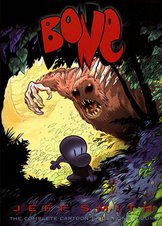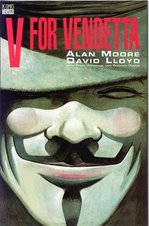In Richard Rodriguez’s autobiographical novel, Hunger of Memory, the Mexican culture of his family life can never coexist with the American culture that has educated him. Rodriguez laments the necessary sacrifice of one of these cultures while scoffing at attempts to recognize both, such as through bilingual education. Yet Rodriguez was divided from his family in more than just culture: economically, he is middle class while his parents are lower class; and his sexual interests, as he later admits, are dissimilar to his parents. His belief that one cannot be apart of two cultures is based on more than just culture. I only mention Rodriguez because his bleak portrayal of a multicultural life, although despicable, is still jarring in its possible truth.
Instead of blaming society for the choices one makes, like Rodriguez does, in American Born Chinese, Gene Luen Yang tells the more introspective story of Jin Wang. Yang interweaves three distinctly separate stories of the present, future and Chinese mythology in the coming of age of Jin Wang.
Yang’s structuring of three interrelated stories is masterful. The structuring reminds me of the end of every Star Wars film. Yang gives you enough of each story to make you want to read more, but then the reader is taken to another story.
The art is awesome. Yang uses the graphic novel medium to convey detail that text alone cannot: I doubt that Wang’s transformations could be explained as well without images. Furthermore, the character’s feelings are usually expressed through setting and body language. While the story is mostly told, drawn, and inked through rectangular panels, Yang manipulates this standard form of the medium to perfection: the Monkey King goes beyond reality by breaking free of the panels; and one story’s panels are accompanied with a laugh track.
In addressing assimilation, racism, and cultural pride, American Born Chinese manages to be funny, vivid, sincere, and philosophical. Yang’s work is the first graphic novel to the win the National Book Award. I highly recommend it to anyone who reads.
By the way, I love the Transformer metaphor.
Friday, October 13, 2006
Tuesday, October 10, 2006
My Enhanced Podcast
Here follows my enhanced podcast assessment. Although it may not bring one to tears, likes James’, I generally liked my first attempt at podcasting. It was refreshing to combine photo and audio files into something other people could briefly view on the Internet.
Recording audio was fairly easy and fun. I was able to record, attach, and edit my narrative to my exact specifications. My attempt at humor was also successful (people laughing equals success). Initially I tried to include James’ actual voice, but the audio file he sent me was not loud enough, or I could not make it loud enough. The selection and inclusion of background music was good. I wanted to fade out the music to one of the songs, but instead of trying to figure out how to do that, I settled for the abrupt ending of the song. This problem will be remedied for the next project.
My visual choices were less rewarding. First, all the photos I collected from the Internet came out blurry. Second, I could not use the Ken Burns effect. I did try to set up my enhanced podcast on iMovie, but the file became gigantic, and I lost all my progress. Still, I am looking forward to working with iMovie again. In terms of transferring files and editing, I had no problems.
Overall, I displayed an understanding of the lessons we read in iLife ’06, and I can see how this technology can be very useful in the secondary English classroom.
Recording audio was fairly easy and fun. I was able to record, attach, and edit my narrative to my exact specifications. My attempt at humor was also successful (people laughing equals success). Initially I tried to include James’ actual voice, but the audio file he sent me was not loud enough, or I could not make it loud enough. The selection and inclusion of background music was good. I wanted to fade out the music to one of the songs, but instead of trying to figure out how to do that, I settled for the abrupt ending of the song. This problem will be remedied for the next project.
My visual choices were less rewarding. First, all the photos I collected from the Internet came out blurry. Second, I could not use the Ken Burns effect. I did try to set up my enhanced podcast on iMovie, but the file became gigantic, and I lost all my progress. Still, I am looking forward to working with iMovie again. In terms of transferring files and editing, I had no problems.
Overall, I displayed an understanding of the lessons we read in iLife ’06, and I can see how this technology can be very useful in the secondary English classroom.
Monday, October 09, 2006
Video Games and Mythology
In response to Sarah’s inquiry as how one would use video games in the classroom, my project focus has changed (again). In attempt to provide answers to your question, I will focus on applying three or four video games in the classroom. Due to the technological restrictions (not everyone has a video game console, although many do), I see the use of video games in the classroom as just one of many options for a culminating project or essay. I think video games can be analyzed on their own, but in these examples I will primarily apply them for comparison to literature or film within specific genres. The first game I will talk can be used in a unit on mythology.
Okami is a video game for the PS2 (PlayStation 2). The game is set in a fictional world occupied by characters representative of Japanese mythology. In the game, you are the wolf deity Amaterasu in the processes of regaining all your powers in order to stop the ancient eight-headed dragon, Orochi. Within the story, many Japanese legends, fables, and traditions are referenced. For example, the eight canine warriors that Amaterasu finds represent the eight virtues of Confucianism. The instruction manual for Okami contains a brief explanation of these references. Students can compare/contrast Amaterasu with wolves in Norse or Native American mythology.
Another form of comparison is through medium. Using a canonized text such as Homer’s Iliad, students can analyze the elements of each story in order to show that one text is more effective in telling a story than the other in terms of setting, narrative, characters, or plot. Narration is particularly interesting because of the stark contrast between literature and video game format. Typically, a video game has two forms of narrative: the preset story shown through cut scenes and the action of the player. How does this form of narrative affect the player/reader? This question leads to a discussion of the framework of the game (i.e. what makes a game enjoyable to play). Although narration is very different in these mediums, an accomplished work in both is characterized by the desire/compulsion to continue to play/read. Of course the more one plays or reads the more sophisticated one’s appreciation becomes.
By the way, since many students will be very excited about using video games for their project, class time should be set aside to show students exactly what they are responsible for. Hopefully this will discourage students who think that a project using a video game will be easier.
Citation of a video game is similar to film except that video games also have instruction booklets that are cited like literature (or the most applicable MLA format). In terms of which video games are appropriate for students: rather than assign video games that students can use, students choose the video games and I approve or disapprove their topic ideas. Some of these games may be rated M for mature, but as long as nothing vulgar is shown in class I see no problem with it. Students already read about sex and violence in the classics.
Complaints or comments?
Okami is a video game for the PS2 (PlayStation 2). The game is set in a fictional world occupied by characters representative of Japanese mythology. In the game, you are the wolf deity Amaterasu in the processes of regaining all your powers in order to stop the ancient eight-headed dragon, Orochi. Within the story, many Japanese legends, fables, and traditions are referenced. For example, the eight canine warriors that Amaterasu finds represent the eight virtues of Confucianism. The instruction manual for Okami contains a brief explanation of these references. Students can compare/contrast Amaterasu with wolves in Norse or Native American mythology.
Another form of comparison is through medium. Using a canonized text such as Homer’s Iliad, students can analyze the elements of each story in order to show that one text is more effective in telling a story than the other in terms of setting, narrative, characters, or plot. Narration is particularly interesting because of the stark contrast between literature and video game format. Typically, a video game has two forms of narrative: the preset story shown through cut scenes and the action of the player. How does this form of narrative affect the player/reader? This question leads to a discussion of the framework of the game (i.e. what makes a game enjoyable to play). Although narration is very different in these mediums, an accomplished work in both is characterized by the desire/compulsion to continue to play/read. Of course the more one plays or reads the more sophisticated one’s appreciation becomes.
By the way, since many students will be very excited about using video games for their project, class time should be set aside to show students exactly what they are responsible for. Hopefully this will discourage students who think that a project using a video game will be easier.
Citation of a video game is similar to film except that video games also have instruction booklets that are cited like literature (or the most applicable MLA format). In terms of which video games are appropriate for students: rather than assign video games that students can use, students choose the video games and I approve or disapprove their topic ideas. Some of these games may be rated M for mature, but as long as nothing vulgar is shown in class I see no problem with it. Students already read about sex and violence in the classics.
Complaints or comments?
Subscribe to:
Comments (Atom)


The Giants will go as far as Eli takes them.




